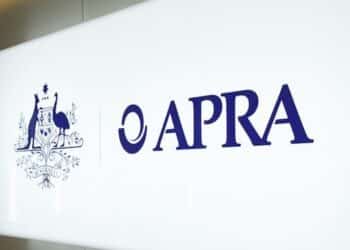According to the Adviser Ratings Q3 Adviser Musical Chairs Report, there have been “hopeful signs of a long-awaited recovery in adviser numbers” in recent quarters – and Q3 is no different, with marginal growth in adviser numbers.
“While the growth figures are small, several months of data suggest the workforce is certainly stabilising,” the report said.
“Since December 2022, financial advice has contracted less than 1 per cent, with total advisers settling just above 15,500. This period of relative steadiness is good news for advisers, who have said farewell to thousands of their colleagues in the past few years and dealt with the aftermath in myriad ways.”
The total number of advisers in the profession sits at 15,689 as at 30 September 2023, an increase of just 55 from the previous quarter. This represents growth of just 0.35 per cent, however it is a large improvement on the 4 per cent fall in numbers during Q2.
Adviser Ratings added that the September quarter saw 122 new entrants, up from 91 in the previous quarter and representing just the second instance of triple digit new entrants in a single quarter over the last five years.
“As we’ve said in the past, it’s still well below the volume needed to replace the outflow of 12,000 advisers over the past few years,” the report said.
“Similarly, the departures in Q3 were historically low, with 251 ceased advisers recorded across the three months. It’s worth noting we usually see a drop-off in the third quarter, as the end of financial year is often a more popular time to exit.”
The firm highlighted the role that “legislative clarity on the profession’s direction” is playing in stabilising adviser numbers, adding that the profession could be in a position to now see further growth in numbers.
“In September, the federal government’s promised experience pathway passed Parliament, which gives advisers with a clean record and 10 years’ experience an avenue to practising,” the report said.
“Of course, we don’t expect every adviser who has left to return, as many have retired or moved on to other ventures; however, the pathway should move the needle somewhat.”
There was also an uptick in advisers switching to new licensees during Q3, increasing to 521 from 418 during the previous quarter.
“Diversified licensees lost the greatest number of advisers across the quarter, while privately owned licensees continued to grow their market share,” the report said.
The licensee market has changed shape as advisers migrate to privately owned licensees from virtually every other segment.
Mid-sized licensees (11–100 employees) showed the greatest growth this quarter, while almost two-thirds of advisers are now privately licensed. Privately-owned licensees also make up 89.1 per cent of all licensees, with the vast majority (81.4 per cent) having one to 10 employees.
“Banks and limited licensees now collectively oversee just a few hundred advisers. Both once-popular segments have become casualties of changing regulations and adviser preferences,” the report said.
“Industry superfunds now license fewer than 600 advisers, after losing a handful during the quarter.”




Where is the correlation in regulatory certainty and participation being stable? Mutually exclusive and which profession celebrates treading water. Awful
The only thing stabilising #s is the difficulty in leaving licensees and the gaslighting hope of QoAR which is less and less likely of ever helping advisers at all. The yearly #as still down by triple digits. Once the 2024 CSOLR and ever-increasing ASIC Levy both come in, watch the waterfall of exits aggressively increase.